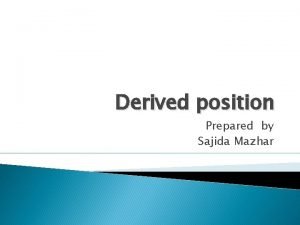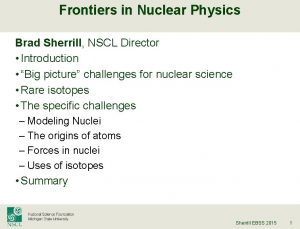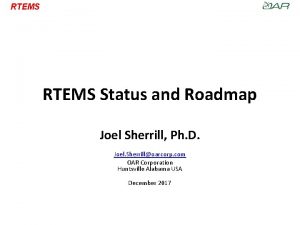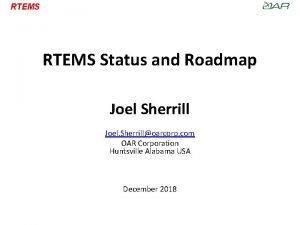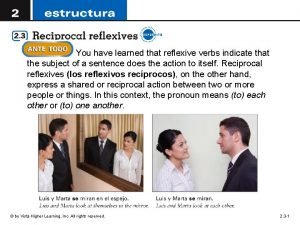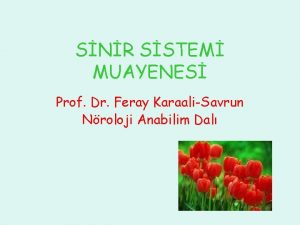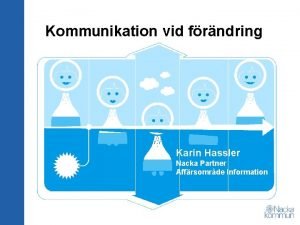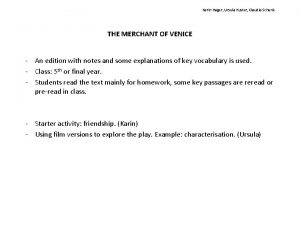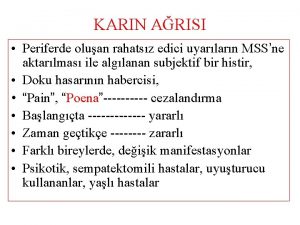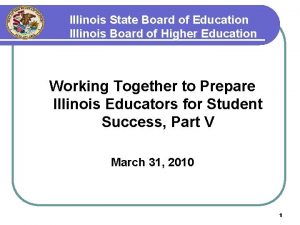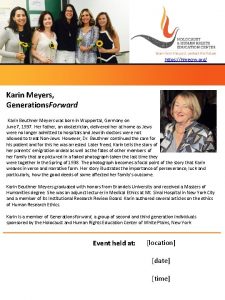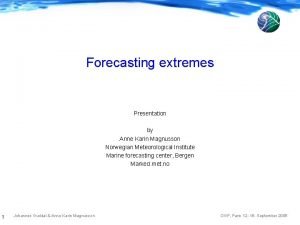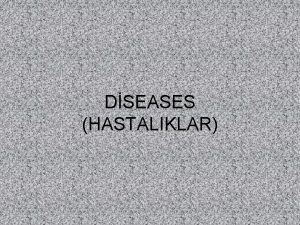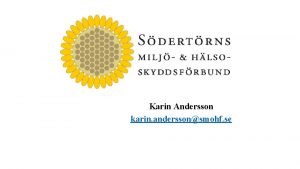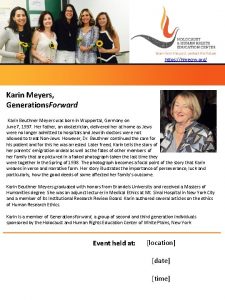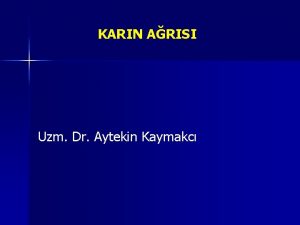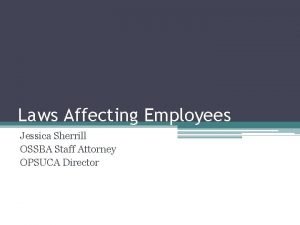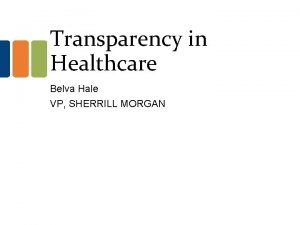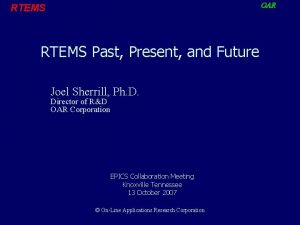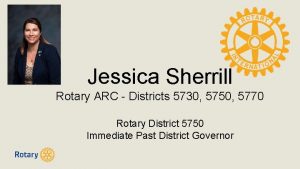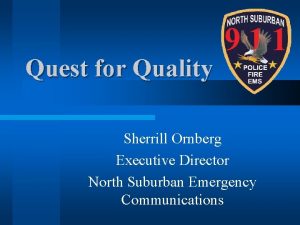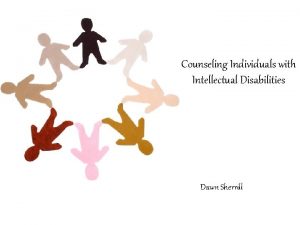Transition to Practice Karin Sherrill Laura Crouch Carol




























- Slides: 28

Transition to Practice Karin Sherrill Laura Crouch Carol Cheney

Arizona Simulation Network http: //azsimnet. com

Practice Gap • First article in 1930 (Townsend, 1931) discussed Practice Gap • Benner novice to expert • Kramer’s “Reality Shock” from 1974

Problem: NCSBN Employer Study (2002 & 2004) Are novice graduates being prepared to provide safe and effective care? 60. 0% 50. 0% 40. 0% 2002 30. 0% 2004 20. 0% 10. 0% Diploma BSN ADN PN http: //www. ncsbn. org

Problem: Advisory Board Company Survey (2008) • 5, 700 frontline nurse leaders • 400 nursing deans/directors/chairs http: //www. advisoryboardcompany. com

Problem: Advisory Board Company Survey (2008) • Concerns: – Initiative – Quality improvement – Time management – Tracking multiple responsibilities – Conflict resolution – Delegation http: //www. advisoryboardcompany. com

Turnover Rate • Research varies – Kovner (2009) found 26% in two years – Others as high as 35 – 60%

Transition/Residency Programs United States (more? ) International • California’s New Grad RN Transition Program • North Carolina Transition to Practice Initiative • Vermont’s Nurse Internship Project • • • Australia Canada Ireland Portugal Scotland

• Pass NCLEX • Separate Orientation Hospital Policies • Includes all levels of Nursing Entry • 5 Online Modules • 6 Month Preceptorship (w/preceptor training)

Simulation Study http: //www. ncsbn. org

Standardized Patients vs. High-fidelity Patients • Finding standardized patients • Scenario Reality • Script development time vs. ad lib • Objectives and Outcomes • Cost Sleeping vs Sleeping

Simulation Hours • How many simulation hours in a nursing program? • How much time for simulation in each course? • Placement of simulation within the semester • How do we measure/ evaluate simulation effectiveness r/t time?

Healthcare Reform Changes • As funding reduces so will amount of education

56% of all Medication Errors do to improper IV Administration Patient Safety and Quality Healthcare 06/05

Central Venous Catheter Insertion • CVC statistics- In US over 5 mil/year placed – ≥ 15% patient complications • 5 -19% mechanical • 5 -26% infectious • 2 -26% thrombotic • Need to reduce errors

Virtual and Hands-on Simulations

With Proven Outcomes • 92% decrease in pneumothorax • 83% decrease in infections

Revision of Traditional Training • Weighted Checklists • Train to errors • High fidelity simulation

With Proof of Learning and Generalization 0. 9 0. 8 0. 7 0. 6 0. 5 Correlation with Experts Increases learning by 300% 0. 4 0. 3 0. 2 0. 1 0 Novices Before Training Conventional ACLS Training Low End Simulation with Errors Training High End Simulation with Errors Training

Focus on Quality and Safety • • Reduce Errors Increase Quality Increase safety Improve efficiencies Reduce Costs

Nursing On-boarding • Highest rate of attrition is in 1 st yr • New nurses are overwhelmed when placed into patient care

It costs a Banner facility $1, 000 just in wasted OR time to train 14 surgeons in robotic surgery.

Formative Evaluation • Aimed at course/simulation improvement • Asks learners for feedback to improve • All along the way you look at ways to improve, make changes

Summative Evaluation • Provides info whether someone or something did what it is designed or supposed to do • Associated with number scores or letter grades

Formative and Summative • The same information can be used for either

“Audit”ive Assessment • Audits provide “reasonable assurance” that something is error free or that quality standards are being met • Measurement rather than to express an opinion about the fairness of statements or quality of performance (leave this assessment to peer reviews and boards)

Evaluations Assessments and Audits… Oh My! • Simulation is a practical application • Look at knowledge, skills, critical thinking, interpersonal relations • All of which bridge the gap from transition to practice • Help to guide us to meet both the learner needs and needs of the healthcare system • Gives us data…

Let’s Debrief…. .
 Karin sherrill
Karin sherrill Kneel sitting is a derived position of
Kneel sitting is a derived position of Alison crouch
Alison crouch Brad sherrill
Brad sherrill Joel sherrill
Joel sherrill Joel sherrill
Joel sherrill Laura conocía bien a elián. elián conocía bien a laura.
Laura conocía bien a elián. elián conocía bien a laura. Practice assessor and practice supervisor
Practice assessor and practice supervisor Karin allen
Karin allen Karin van haaren
Karin van haaren Genia gluhak
Genia gluhak Serebellar testler
Serebellar testler Karin breck
Karin breck Karin keernik
Karin keernik Karin keernik
Karin keernik Karin hassler
Karin hassler Karin karlsson varberg
Karin karlsson varberg Karin hager
Karin hager Karin gustavsen
Karin gustavsen Karin arisi
Karin arisi Periton irritasyonu nedir
Periton irritasyonu nedir Karin van dommelen
Karin van dommelen Karin chenoweth
Karin chenoweth Karin meyers
Karin meyers Klips2
Klips2 Karin magnusson
Karin magnusson Karin cardell
Karin cardell Karın ağrısı
Karın ağrısı Sok congres
Sok congres

